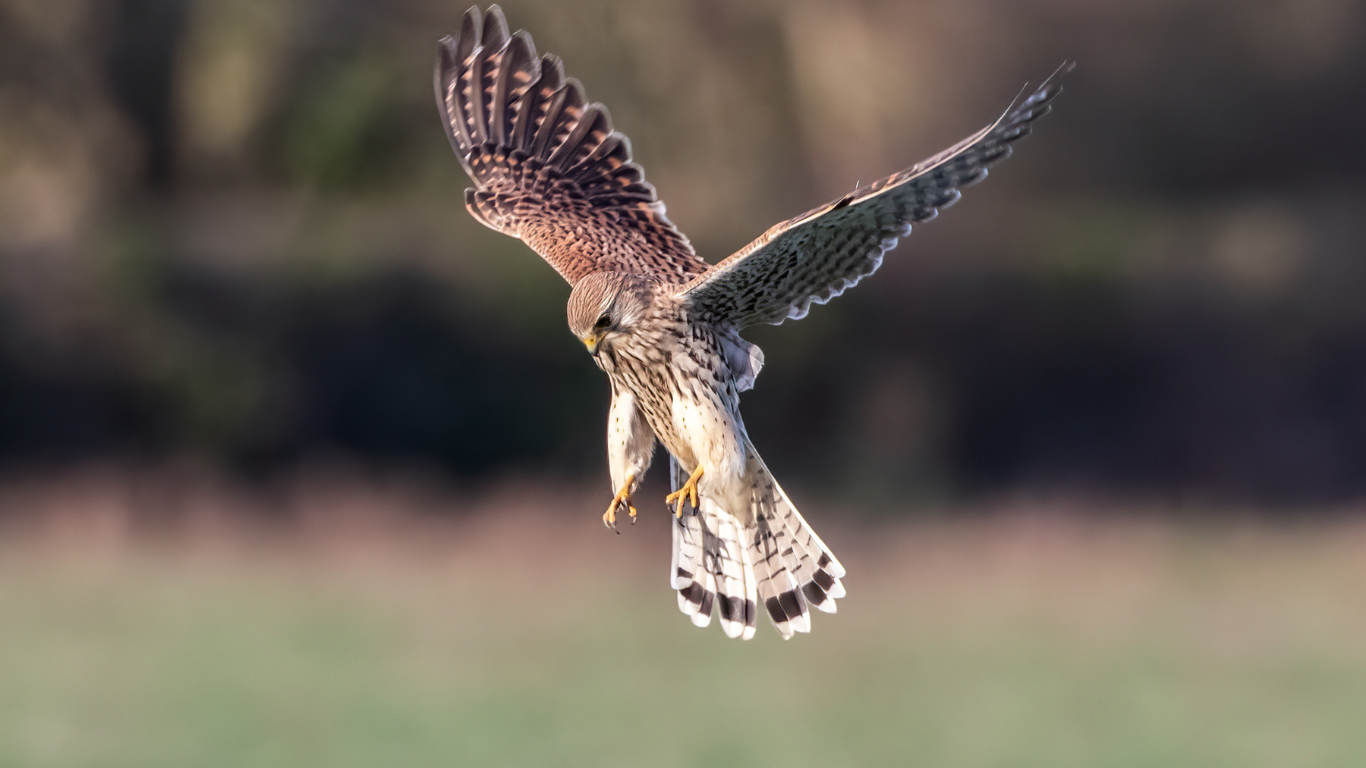Buckle up, nature nerds, because we’re diving headfirst into the electrifying world of kestrel tracks! These aren’t just footprints in the dirt—they’re the claw-marked calling cards of the American kestrel, a pint-sized predator with a heavyweight attitude. Picture a bird so fierce it hunts like a ninja, so stunning it’s dubbed North America’s “sparrow hawk,” and so mysterious that scientists are racing to decode its every move. From dusty trails to high-tech tracking devices, kestrel tracks are your VIP pass to uncovering the wild, wind-whipped life of this falcon phenom. Whether you’re a birder, a hiker, or just obsessed with the untamed outdoors, this guide will blow your mind with everything you need to know about kestrel tracks in 2025. Ready to stalk the skies and trails with the coolest raptor around? Let’s soar into the action!
What Are Kestrel Tracks? The Footprints of a Feathered Fury
Let’s kick things off with the basics: kestrel tracks are the physical imprints left by the American kestrel (Falco sparverius), a falcon so bold it punches way above its weight class. Weighing in at just 3-6 ounces, this bird’s got talons that grip like a vice and a hunting style that’s pure adrenaline. When you spot those tiny, three-toed marks—about 1-1.5 inches long—in the mud or snow, you’re witnessing the signature of a master predator who rules the skies from coast to coast.
But hold up—kestrel tracks aren’t just dirt doodles. They’re clues to a high-flying life of hovering hunts, dizzying dives, and epic migrations that scientists are only starting to unravel. Beyond footprints, “kestrel tracks” also refers to the cutting-edge tech—think GPS tags and radio transmitters—used to follow these falcons across continents. From a muddy talon print in your backyard to a digital ping in the Rockies, every track tells a story of survival, speed, and sheer avian swagger. Ready to decode the drama? Let’s dive deeper!
The American Kestrel: Meet the Star of the Show
Before we get lost in the tracks, meet the rockstar leaving them: the American kestrel. This bird’s a showstopper—vibrant orange, blue, and slate feathers that scream “look at me!” It’s the smallest falcon in North America, but don’t let the size fool you. With a wingspan of 20-24 inches and a hovering flight that defies gravity, it’s a lean, mean, hunting machine. Grasshoppers, lizards, mice, even small birds—nothing’s safe when a kestrel’s on the prowl.
What makes it extra wild? Kestrels are cavity nesters, snagging old woodpecker holes or nest boxes, and they’re pros at adapting. You’ll spot them perched on power lines, scanning open fields, or zipping through suburbs from Canada to Tierra del Fuego. But here’s the kicker: their numbers are dropping—down 50% since the ‘60s in some spots—and those tracks are key to figuring out why. Whether it’s a claw mark or a GPS blip, every trace is a lifeline to saving this feathered fiend!
Kestrel Tracks on the Ground: Spotting the Signs
Let’s get dirty—literally! Kestrel tracks on the ground are your first clue to this bird’s badassery. Picture a three-toed print, with a slight hallux (rear toe) mark if conditions are soft. They’re small—about an inch wide—and often paired with pellet piles (regurgitated bones and fur) or feather scatter from a fresh kill. Look for them in:
- Open Fields: Kestrels love hunting grasslands where prey’s plentiful.
- Trail Edges: Near shrubs or fences where they perch and pounce.
- Snowy Patches: Winter tracks stand out like neon signs, often with wingtip brushes from a takeoff.
Finding these tracks is like cracking a nature code. A deep imprint? Fresh kill nearby. A light scrape? Just a quick pitstop. Pair them with sightings of that signature hover—kestrels beat their wings like hummingbirds while locking onto prey—and you’ve got a front-row seat to their hunting hustle. Grab your binoculars and start stalking those trails, because these prints are your treasure map to kestrel country!
High-Tech Kestrel Tracks: The Science That’ll Blow Your Mind
Now, let’s blast into the future—kestrel tracks aren’t just about mud anymore. Scientists are strapping these birds with tech straight out of a spy movie: lightweight GPS backpacks, radio transmitters, and even tiny geolocators weighing less than a dime. Why? To track their epic journeys and unravel mysteries like:
- Migration Madness: Some kestrels fly 2,000 miles from Canada to Mexico, others barely budge—why the split?
- Habitat Hustle: Are they ditching fields for suburbs, and what’s the fallout?
- Survival Secrets: How do pesticides, climate shifts, and nest competition hit their numbers?
Take the Audubon Society’s 2020 project—tiny trackers revealed kestrels dodging hurricanes and crisscrossing states, data that’s gold for conservation. Or the Hawk Conservancy Trust’s nest box studies, where tracked birds showed how habitat loss is choking their breeding grounds. Every ping is a pulse-pounding clue, turning kestrel tracks into a high-stakes mission to save a species on the brink!
Why Kestrel Tracks Matter: A Conservation Crisis Unveiled
Here’s where it gets real: kestrel tracks aren’t just cool—they’re a lifeline. The American kestrel’s population is tanking—1.5% annually in some regions, says the Cornell Lab—and no one’s 100% sure why. Theories? Habitat loss from sprawling suburbs, pesticide-zapped prey, and climate chaos messing with migration. Those tracks—whether claw marks or digital dots—are the breadcrumbs scientists follow to crack the case.
Nest box projects, like those from Boise State University, use tracked kestrels to prove artificial homes can boost breeding—up to 30% in some areas! Meanwhile, migration data shows how wind farms and urban sprawl block their routes. Every track fuels action—more boxes, better land policies, cleaner farming. Want to save a falcon that’s been hunting since the Ice Age? Kestrel tracks are your battle cry!
How to Spot Kestrel Tracks: Your Field Guide to Falcon Fever
Ready to play detective? Here’s your cheat sheet to spotting kestrel tracks in the wild:
- Look Low: Check muddy trails, sandy riverbanks, or snowy fields—kestrels land to eat or rest.
- Size It Up: Tracks are 1-1.5 inches long, with three forward toes and a faint rear one. Bigger than a sparrow, smaller than a hawk.
- Scan the Scene: Pellets (1-2 inches, grayish, full of bug bits) or prey scraps (feathers, bones) mean a kestrel’s been snacking.
- Sky Check: Spot that hover? Kestrels hang mid-air, wings blurring—tracks below confirm the kill zone.
- Timing’s Key: Dawn or dusk in spring and fall—prime hunting and migration seasons.
Hit up grasslands, scrublands, or even your local park—kestrels aren’t picky. Bring a camera, sketch pad, or just your eagle eyes, and you’ll be tracking like a pro in no time!
Kestrel Tracks in Tech: Tools That Turn You Into a Tracker
Want to go full geek? Tech’s got your back. Kestrel tracks aren’t just for scientists—citizen birders are jumping in with:
- eBird: Log sightings and pellet finds—your data helps map kestrel hotspots.
- Merlin Bird ID: Snap a photo or record a call; it’ll ID that kestrel in seconds.
- Kestrel Meters: Not for tracking birds directly, but these weather gadgets (wind speed, temp) mimic kestrel flight conditions—perfect for predicting where they’ll hunt.
- Trail Cams: Set one near a nest box or perch—catch those talons in action!
Pair these with GPS apps like Gaia or AllTrails to pinpoint prime kestrel zones. You’re not just watching—you’re part of the mission to track these sky warriors!
The Life Behind the Tracks: A Kestrel’s Wild Ride
Every kestrel track tells a tale of grit and glory. Spring brings breeding—males flaunt aerial acrobatics, dive-bombing rivals to snag a mate. Summer’s all about hunting—hovering 30 feet up, they drop like missiles, snagging prey with 80% accuracy. Fall kicks off migration—some trek thousands of miles, dodging storms and hawks, while others chill locally. Winter? They hunker down, scavenging when prey’s scarce, their tracks marking a fight for survival.
Males and females team up differently—guys hunt, gals guard the nest. Fledglings stumble out by July, leaving clumsy tracks as they learn the ropes. It’s a soap opera in feathers, and those tracks are the script—raw, real, and riveting!
Kestrel Tracks Across America: Where to Find Them
Kestrels are everywhere, and their tracks prove it! Top spots to hunt for them:
- Western Plains (Idaho, Montana): Boise State’s studies show nest box trails teeming with tracks.
- Northeast (New York, Vermont): Audubon’s tracking projects light up snowy fields with talon marks.
- Southwest (Arizona, New Mexico): Open deserts host year-round residents—check sandy washes.
- Midwest (Illinois, Iowa): Cornfields and prairies are prime for pellet piles and prints.
- Coastal Cali: Perches on cliffs leave faint tracks near seabird scraps.
Migration cranks up the action—fall tracks stretch from Canada to Central America, a 2,000-mile gauntlet. Scope eBird’s real-time maps or X posts for hot zones near you—kestrels are closer than you think!
Threats Leaving Fewer Tracks: The Dark Side of the Story
Why are kestrel tracks getting harder to find? The culprits are brutal:
- Habitat Crunch: Subdivisions gobble up grasslands—70% gone in some states, per the Nature Conservancy.
- Pesticide Poison: DDT’s gone, but new chemicals zap insects, starving kestrels—studies show 30% prey loss in treated areas.
- Climate Chaos: Freaky weather screws migration—tracked birds hit storms 20% more since 2000.
- Competition: Bigger hawks and crows muscle in on nests, cutting breeding success by 15%.
Every missing track is a red flag. Conservation’s racing to reverse the slide—your sightings and data could tip the scales!
Join the Kestrel Tracks Mission: How You Can Help
Want in on the action? You can track kestrels and save them:
- Report Sightings: Drop pins on eBird or iNaturalist—every track counts.
- Build Nest Boxes: Simple wood boxes (12x12x18 inches, 3-inch hole) boost breeding—plans at Cornell Lab’s site.
- Go Organic: Ditch pesticides in your yard—more bugs mean more kestrels.
- Spread the Word: Share pics and stories on X—#KestrelTracks trends could spark a movement!
Groups like the Peregrine Fund and HawkWatch need your eyes on the ground. One tracked kestrel in Idaho led to 50 new boxes—your find could do the same!
Kestrel Tracks in Culture: The Falcon’s Fierce Legacy
Kestrels aren’t just birds—they’re icons. Native tribes called them “wind dancers,” symbols of agility and vision. Medieval falconers prized them for small-game hunts, their tracks etched in royal lore. Today, they star in art—think John James Audubon’s vivid plates—and inspire gear like Kestrel Meters, nodding to their weather-ruling rep. Every track ties you to a legacy that’s soared for millennia!
Why 2025 Is the Year for Kestrel Tracks
The clock’s ticking—2025’s prime time to chase kestrel tracks. New tracking tech (like solar-powered tags) is dropping fresh data weekly, per Audubon updates. Populations are at a tipping point—some regions report 5% rebounds where boxes bloom. Climate shifts are shuffling migration, making this spring and fall a tracking bonanza. Miss it, and you’re late to the wildest show in the sky!
Final Thoughts: Kestrel Tracks Are Your Call to the Wild
As we screech to a halt, one thing’s crystal clear: kestrel tracks are more than marks—they’re a portal to a world of ferocity, freedom, and fragile beauty. From muddy claw prints to GPS pings, they reveal a falcon fighting to survive in a shrinking wild. Whether you’re stomping trails, geeking out with tech, or rallying for conservation, these tracks pull you into the kestrel’s orbit—a bird that’s small but mighty, common yet cryptic.
So, what’s your move? Will you scour your local field for talon signs, log a sighting that saves a species, or just marvel at a hover from your porch? Grab your boots, your phone, or your passion—kestrel tracks are calling, and the adventure’s yours to seize.




